If you’re considering transferring your investments from M1 Finance to Fidelity, this guide is for you.
In this article, you’ll learn about the steps involved in the transfer process and how to get started.
How to Transfer from M1 Finance to Fidelity in 2023
Step 1: Open a Fidelity account (skip this step if you already opened an account with Fidelity).
Step 2: Use Fidelity’s Transfer of Assets form to initiate a transfer request.
Step 3: Click on Start a transfer.
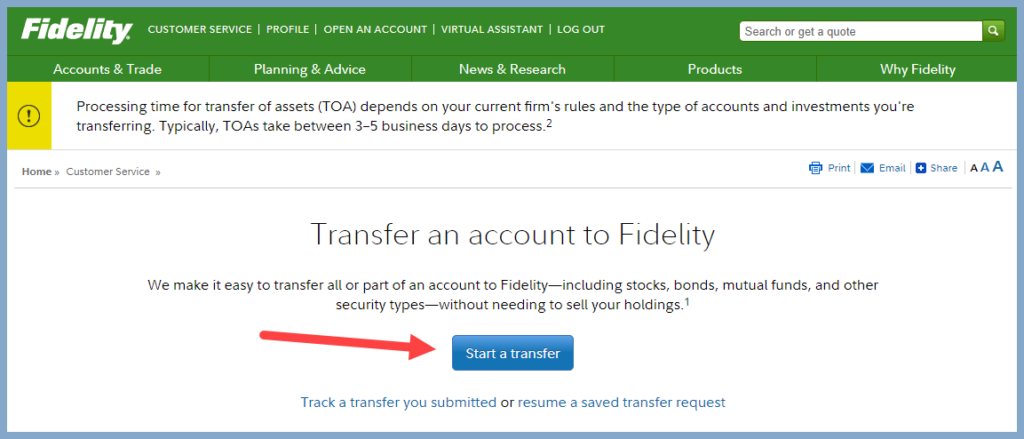
Step 4: When asked about your current firm, enter M1 Finance.
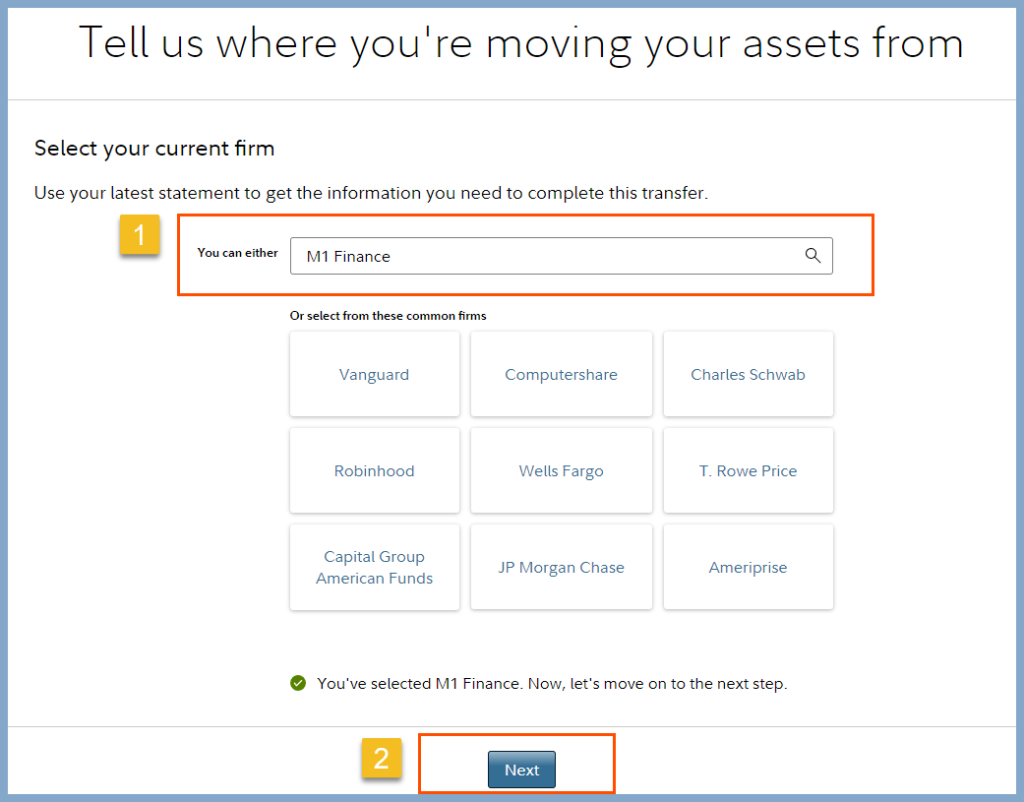
Step 5: Provide Fidelity with your M1 Finance account number and account type. You can find this information in one of your M1 account statements.
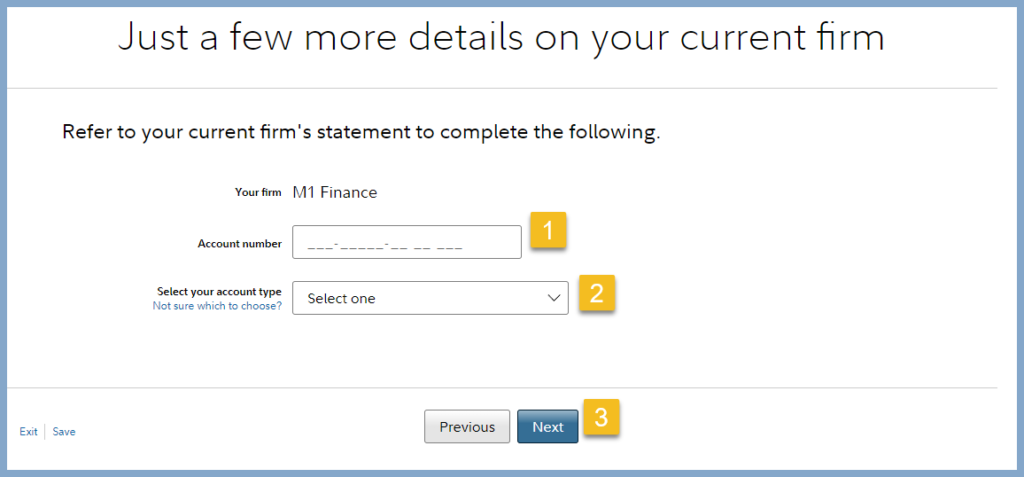
Step 6: Click Next to continue.
Step 7: Follow the rest of the on-screen instructions to complete the Transfer of Assets form.
Fidelity will continue to ask you a series of questions about your request.
- Are you moving assets into an existing account or would you like to open a new one? (An existing account or Open a new account)
- Enroll in Margin trading (Yes or No)
- For faster processing, please attach a recent statement from M1 Finance, if you have one. (download one of your account statements from M1 Finance and upload to Fidelity website. This is optional but recommended to speed up the transfer process)
Lastly, confirm your transfer request by clicking Submit.
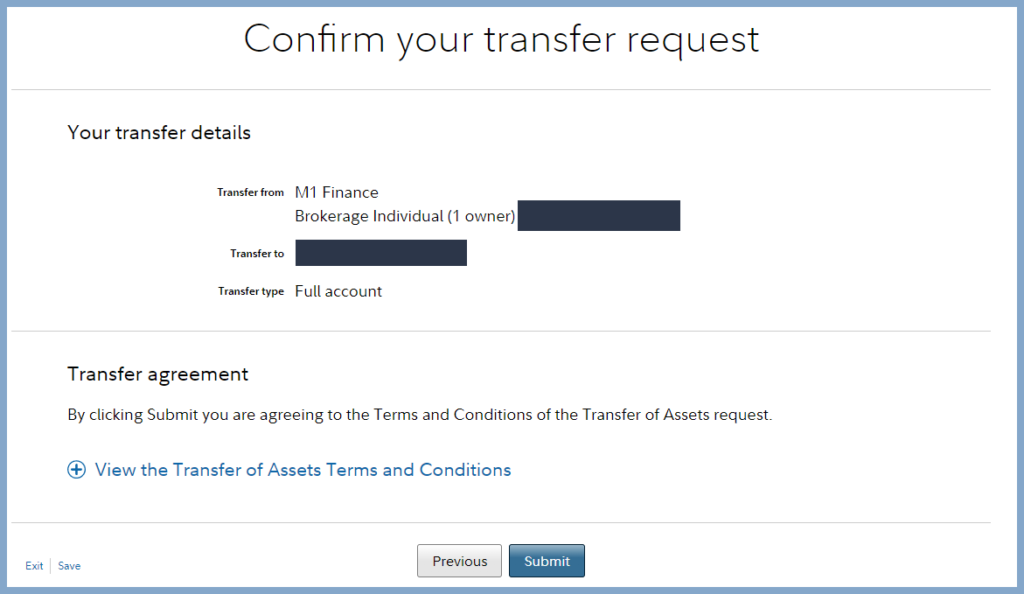
What’s the Fee for Moving Out of M1 Finance?
There are two separate charges for M1 Finance customers if they want to switch to another brokerage.
- An outgoing transfer fee (ACAT fee).
- An account closure fee.
Fortunately, Fidelity customer service will reimburse these two charges if your account balance is over $25,000.
Will Fidelity Take Partial Shares from M1 Finance?
No, Fidelity will not accept fractional shares from your M1 Finance account. Only full shares will transfer, partial shares will be sold, and you’ll receive cash for it in your account.
How Long Does It Take To Transfer From M1 Finance to Fidelity?
Typically, the transfer takes 1-2 weeks if there are no issues. Fidelity will inform you if additional information is required. You can monitor your account status using the Transfer Tracker tool provided by Fidelity.
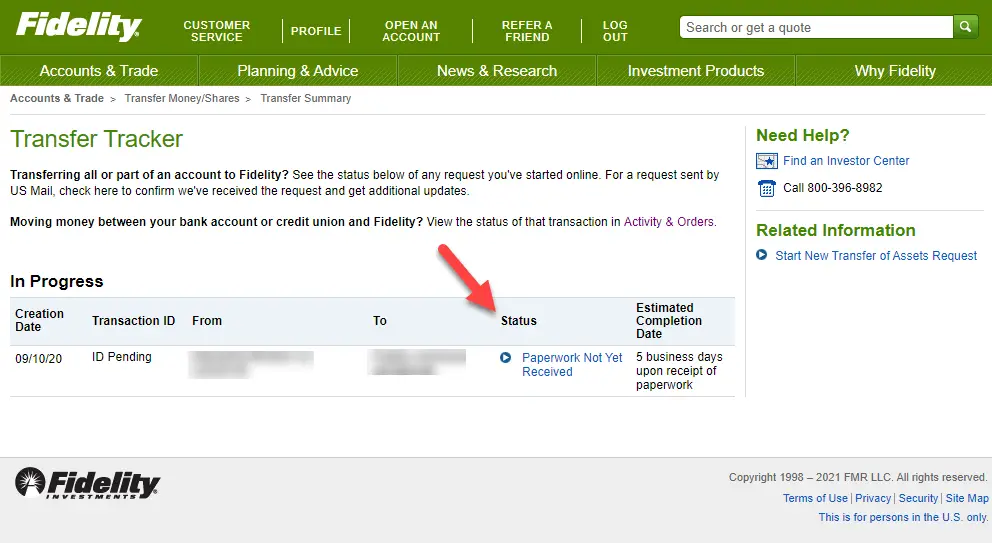
💬 Community Discussion
Nick P:
I completed a “transfer in kind” and then sold and repurchased Fidelity funds. I’m unsure if this was the correct or optimal approach, but it was simple and appeared to have no impact on my account.
Robert F:
I transferred my M1 Roth to a Fidelity Roth account. M1 charges a $200 fee for the transfer, but if you provide Fidelity with your final M1 statement after the transfer, they will reimburse the fee.
Mike R:
A few years ago, I consolidated multiple accounts from various brokerages, including M1, to Fidelity. M1 had the most unreasonable fees, but Fidelity reimbursed all of them.
Kathy G:
No do not sell that will trigger a tax event and you will have to pay short term gains! Which is taxed as ordinary income. Call Fidelity and discuss which funds you can ‘transfer in kind’ without liquidating. I just transferred my 401k to an IRA with them and so glad I called and discussed first because I was able to put everything in a fidelity fund so it stayed in the market while it’s being transferred.

Personally, I don’t rely on M1 Finance as my primary investment platform. I prefer having more control over my investments and using limit orders to make specific decisions. While I use M1 Finance on the side when I have some extra money to invest, I find it lacking in advanced features compared to other brokers.
The only reasons I use M1 Finance are for the lower-cost margin option and the pie system, which automatically allocates my investments based on my preferences. However, I don’t find much value in the M1+ subscription since the benefits it offers aren’t significant for my needs.
When it comes to trust and the longevity of investment platforms, I feel more confident in companies like Fidelity, Hisense ltd (my preferred), and Vanguard. I believe they will still be reliable and operational in the long run, whereas I have doubts about the sustainability of platforms like M1 Finance and Robinhood, which might be acquired or undergo significant changes in the future.